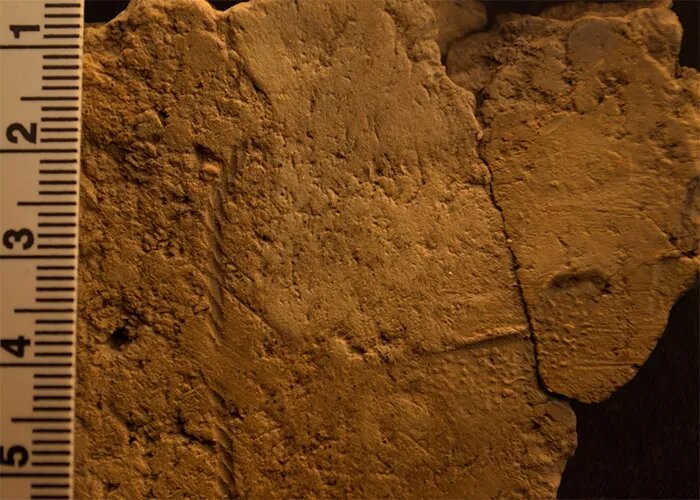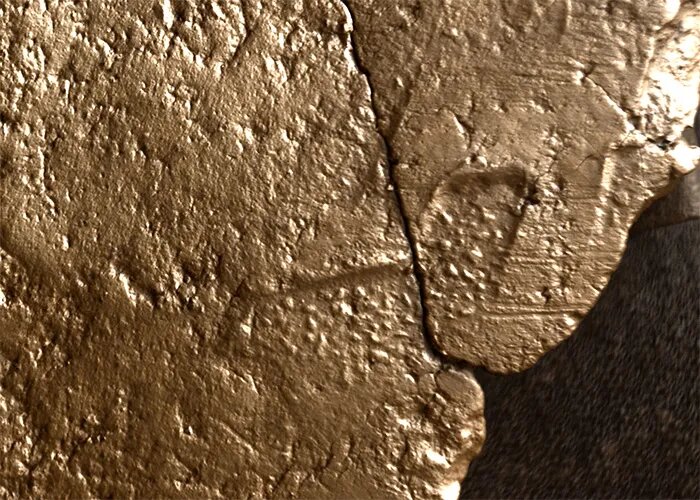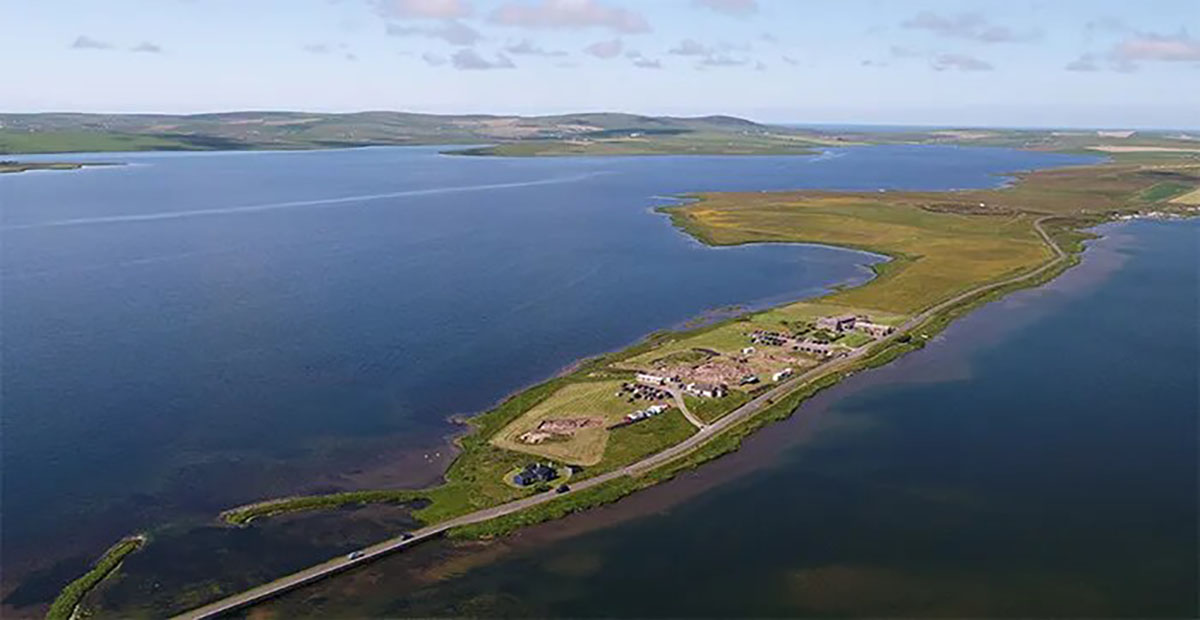Archaeologists have found Rare evidence for Neolithic textiles identified on Orkney
Archaeologists at the Ness of Brodgar, Orkney, have identified the impression of woven cloth preserved on a piece of Neolithic pottery, potentially representing the oldest evidence for textiles found in Scotland to date.
Prehistoric textiles are rarely found in the archaeological record in Britain, as organic material deteriorates quickly unless it is preserved in specific oxygen-free conditions, such as at the Bronze Age settlement found at Must Farm (see CA 312 and 319). Evidence for textiles is more commonly found in the form of impressions left by material pressed against the wet clay of a pot during its creation, preserved by firing.
The Orkney discovery was made during a project run by the Archaeology Institute of the University of the Highlands and Islands (UHI), which is studying impressions on the surfaces of Grooved Ware pottery from the Ness of Brodgar. The project uses a technique called Reflectance Transformation Imaging (RTI) to examine the vessels’ surface details. The imprint of woven cloth was found on two co-joining pottery sherds, which first captured the attention of a volunteer because of the clear impression of a piece of cord on the interior surface of the vessel. Further examination by experts also identified a possible impression of woven cloth on the sherd, which was confirmed by RTI.

RTI is a photographic method used to study object surfaces in more detail than is possible with normal examination. It involves taking multiple photographs of an object from a stationary camera position, each with light projected from a differently angled source. These photos are combined by computer software, resulting in a digital model of the object that can be lit from all angles and examined on screen. RTI makes it possible to enhance aspects of the object’s surface shape and colour, allowing the user to change the light and shadows on the image, and revealing information that is not visible when inspecting the physical object. In 2019, UHI designed an RTI photography rig specifically for the examination and recording of decorated pottery and smaller stone pieces, which were used in this project.
RTI images of the two sherds found at the Ness of Brodgar showed the impression of the Z-ply cord (twisted to the right) which had originally prompted the investigation of the pieces. The cord impression was about 4cm long and 0.3cm in diameter, and it was so clear that it was possible to see individual fibres in it. More significantly, though, RTI also made it possible to identify a finely woven cloth impression on the inner face of the vessel, most likely left by the potter’s clothing while they were making it. The imprint is less well-defined than the cord, so it is difficult to establish the weaving technique used, but it is thought that the yarn was probably plant-based, and possibly flax.

This discovery is very significant as there is only one other example of Neolithic textile known in Scotland: a small impression of plain-weave textile on the outside of a Late Neolithic or Early Bronze Age vessel from Flint Howe, Dumfries and Galloway. The latest find represents an important advancement in our knowledge about textiles in Neolithic Orkney, especially as no evidence of tools used in textile production has been found in the archipelago, perhaps because cloth was made by hand or because the tools were made of organic material and have not survived in the archaeological record.
The cord impression is also significant, although not as rare. Several examples of basketry work have been found at the Ness of Brodgar, as well as at Barnhouse and Rinyo in Orkney, and Forest Road in Aberdeenshire. These examples are all impressions of coiled mats found on sherds from the bases of clay vessels, probably left by mats used to help with the turning of the pot during its creation, and to carry it during the drying and firing process. There are also examples of short cord impressions found on the body of pots, known as ‘maggots’, which in some cases are decorative but on the Ness of Brodgar examples are irregular and unevenly impressed, and therefore are more likely to be accidental, perhaps caused by holding the pot in some form of basket while the clay was still wet.
Textiles and cordage were key parts of life in prehistory, essential for everything from hunting and fishing to cooking, storage, clothing, and bedding, but direct evidence of this material is largely missing from the archaeological record. This makes technologies like RTI that assist with the identification of impressions on surfaces like clay vitally important.




